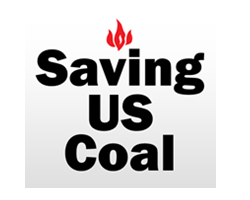In 1981 CEQ Was Wrong; in 2020 CO2 Endangerment is, Too

By Fred Palmer, J.D. Senior Fellow-CO2 Policy, Center for the Study of Carbon Dioxide and Global Change and Head of Saving Us Coal
(9).jpg)
Fred Palmer
September 2, 2020 - As one of the last acts of the Carter Administration, in January,1981, the brand-new United States Council on Environmental Quality (CEQ) issued a study titled Global Energy Futures and the Carbon Dioxide Problem. No matter to CEQ, President Carter was one reason the US coal fleet exploded in growth from the 70s as a policy response to the two Middle East oil embargoes in the 1970s, one on his watch. Carter’s strong endorsement of coal and clean coal technology was advanced as a matter of needed national energy policy and was on display at a public tour by the President of what was then the Cane Run coal plant near Louisville, Ky in 1979. Washington being Washington, CEQ nonetheless issued a study that frontally attacked future coal and other fossil fuel use in the name of preventing catastrophic global warming, embracing the same dire climate effects identical to those predicted today, all by policy makers who live in a virtual world then and now.
Subsequent actions from 2009-2012 by the Obama Administration EPA and CEQ establishing climate and hostile fossil fuel policies, picked up where the Carter CEQ left off, using the same flawed tools and arguments embraced by CEQ in 1981. The computer models used today are more sophisticated, for sure, but the input is not as the assumptions used by CEQ in 1981 for unknowns were the same kind as today, particularly the impact of clouds and water vapor. The Obama EPA issued the 2010 CO2 Endangerment Findings. The Obama CEQ issued NEPA guidelines giving leeway to kill fossil fuel projects based on global warming concerns.
In the study, CEQ predicted that if no action were taken to curb fossil fuel use the world would face a disruptive temperature increase of approximately three degrees C by the year 2025. The study further stated that a CO2 related global warming should be observable sometime within the next two decades. Of course, real world data disprove the model-based prediction of dramatic increases in global temperatures both then and now. The CEQ 1981 study is attached here.
Here is the CEQ Vision of the Apocalypse in 1981:
“In the short time span of a little more than a decade, the earth’s average temperature increases several degrees Celsius, much larger increases occur in the polar regions.
Precipitation patterns shift dramatically from the average of the previous several hundred years . . . US agricultural production declines sharply due to the extremely arid conditions over most of what were prime agricultural regions. Marginal agricultural areas in many arid and semi-arid regions of the world become unproductive, with particular serious impact on many less developed countries”.
“US agriculture production declines sharply”?? US and world agriculture production has spent the last forty years in always increasing yields, setting production records almost every year. And just today World-Grain.Com reports record corn, wheat and soybeans output for 2019. Some apocalypse!!
Since CEQ in 1981, there has been warming, yes, but well within natural variability. The National Oceanic Atmospheric Administration (NOAA) temperature Satellites went up in 1979 under a Carter budget to monitor global warming. And no doubt in CEQ’s mind to confirm the apocalypse as it occurred. But the reverse happened.
Since 1979 per the same satellites forty years later with only five years to go until 2025, show warming at 0.43 degrees Celsius, which by itself blows up the apocalyptic view of CO2 and global warming. Is there warming from CO2? Of course, there is but it is modest and limited, no matter how much fossil fuels we us, and will be limited from here, per Richard Lindzen who has correctly maintained this posture for over thirty years.
None of the CEQ 1981 human well-being warnings and predictions have come to pass. In fact, during the past 40 years of modest, beneficial warming, ever increasing fossil fuel use has enabled unparalleled human population increase, life expectancy and progress. Billions on earth have been lifted out of poverty through coal to electricity, now natural gas as well, and oil serving as a key driver for human mobility and well-being.
Increased fossil fuel combustion does mean greater atmospheric CO2 concentration, but record food production and a greener earth has been the primary result. More food and a greener earth will continue to facilitate still more of us living longer and better.
So, let’s have forty more years just like the last forty. CEQ and EPA please stand down on CO2 and get out of the way.
To donate to Saving US Coal, please click here.


























(9).jpg)